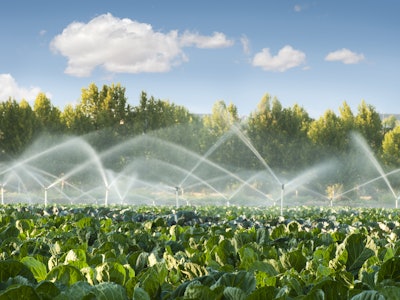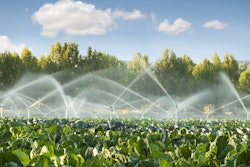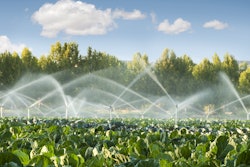
2020 has been a challenging year for the food and agriculture industries, with COVID-19 having impacted the entire food supply chain from field to consumer. Restrictions of movement for workers, closures of food production facilities, and unpredictable changes in consumer demand highlighted instability and inflexibility in the food supply chain, creating severe challenges for farms, businesses, and consumers alike. The pandemic also put the spotlight on the global meat industry and its role in zoonotic disease outbreaks, with COVID-19 being the latest in a range of outbreaks linked with the meat industry including several aviation flu outbreaks and the earlier SARS epidemic that hit China in 2002.
However, the crisis caused by the COVID-19 outbreak has led to several opportunities in the global food and agriculture industry, particularly for alternative and novel food systems.
An industry that has seen a particular surge in interest in vertical farming. Vertical farming involves growing crops indoors in stacked layers under a controlled environment, enabling year-round highly efficient crop production in almost any location, including in the middle of cities. By enabling rapid, local production, vertical farming can reduce the miles that food must travel before it reaches consumers and enable production to be increased to reflect local changes in demand. Vertical farms could be set up in or around supermarket distribution centers, delivering large quantities of fresh produce to consumers within a day of harvest, circumventing the supply chain issues that were exposed during the worst of the pandemic.
Recognizing this potential, investors have poured money into vertical farming in 2020, according to a recent IDTechEx report, “Vertical Farming 2020-2030,” which explores the key technological and market factors that could lead to the success or failure of the vertical farming industry.
Another alternative food system that has benefitted from the pandemic is the alternative proteins space. Closures of meatpacking facilities in the immediate aftermath of the COVID-19 outbreak alongside growing consumer skepticism of the meat industry led to a surge in sales of plant-based meat alternatives, with Nielsen reporting that U.S. sales of alternative meat products rose by 264% in the nine weeks ending on May 2. The Good Food Institute reported that $930 million was invested into the alternative proteins space in the first quarter of 2020, more than the amount raised in the entire of 2019.
According to the IDTechEx report covering this space, “Plant-Based and Cultured Meat 2020-2030,” this trend is set to continue, with the market for novel meat substitutes expected to exceed $30 billion by 2030. As this market grows, it will create significant opportunities for companies throughout the value chain, including protein providers, hardware manufacturers and chemical companies, particularly as technological advances lead the field in new directions, such as meat products created from cultured animal cells and proteins derived from novel fermentation techniques.
Outside of the COVID-19 pandemic, there are growing opportunities in the food and agriculture space. In 2020, the European Commission, the executive branch of the European Union, announced a “Green Deal” farming plan to reduce synthetic pesticide use by 50% and reduce synthetic fertilizer usage by 20%. The recent election of Joe Biden in the US suggests that America is also likely to increase its focus on sustainability over the coming years.
An area of agricultural technology that could benefit from this is the industry for agricultural biologicals. Agricultural biologicals is an umbrella term for crop protection and enhancement tools derived from nature, including biostimulants, biopesticides and biofertilizers. Unlike conventional agrochemicals, which tend to be based on small molecules and chemicals derived from mineral sources, agricultural biologicals cover a wide range of products, such as plant extracts, insect pheromones and genetically engineered bacteria that manipulate the microbiome of crops.
Agricultural biologicals are growing quickly. Over the last decade, the market has expanded by 500%, ten times the rate of growth of the chemical pesticides market.
The drive toward sustainability in agriculture is a big reason behind this growth. As they are derived from nature, there are hopes that biologicals will have less of an adverse environmental impact than crop protection chemicals. Biological methods of crop protection such as predatory insects or bacteria that produce insecticidal compounds could also help reduce the amounts of synthetic chemicals that need to be sprayed on fields. Additionally, the production of biologicals derived from plants and bacteria is likely to have a smaller carbon footprint than the synthesis of agricultural chemicals. These sustainability benefits are coupled with a serious need for innovation in agrochemicals. Growing pesticide resistance and increasingly harsh regulations around agrochemicals are leaving farmers with fewer tools to protect their crops and boost their yields. Agricultural biologicals could help to change this.
As food production continues to evolve in 2021 and beyond, synthetic biology, genome editing, and other genetic technologies will play an increasingly important role in agriculture. Genome editing technologies have been a particular source of excitement, potentially allowing for precise and low-cost modifications of the genome for crop improvement.
Genetic technologies in agriculture will also help to support advances across the AgTech industry.
Despite the challenges seen in 2020, the outlook for AgTech is bright, with numerous opportunities for innovative companies in the space.

















